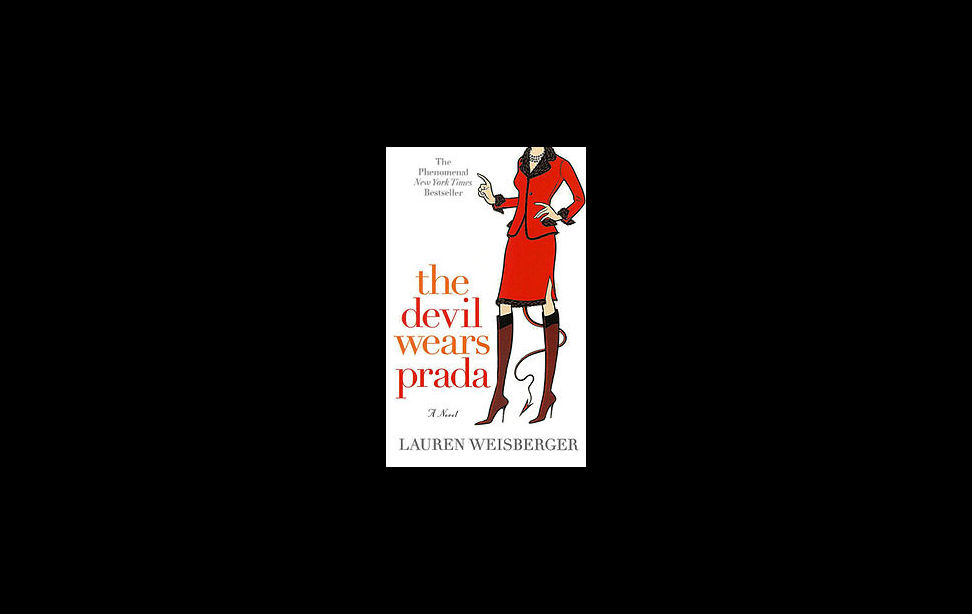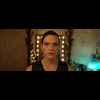Book vs. Movie: Which One Wins? Part 1: The Movie
In looking at film adaptations of literary source material, the prevailing criticism is, "The movie was OK, but the book was so much better!"
But in some cases -- as rare as a female director winning the Oscar -- the movie trumps the book. Following are five instances:
The Devil Wears Prada. A thinly-veiled account of Lauren Weisberger's harrowing experiences when, as a new college grad/budding writer, she took an über-demanding job as assistant to Anna Wintour, the all-powerful editor-in-chief of Vogue magazine.
The book (by Lauren Weisberger): Self-serving and underwritten, with a whiny protagonist frequently complaining to her 2D friends and dullard boyfriend.
The movie (screenplay by AlineBrosh McKenna, starring Anne Hathaway, Meryl Streep, Stanley Tucci): Meryl Streep's turn as the icy goddess of the fashion world is absolutely delicious. Anne Hathaway offers up an extremely likeable heroine, and Stanley Tucci delivers a funny yet heartfelt performance that adds far more depth than the character on the page. And wouldn't we all prefer to see extreme fashion in the, um, flesh, rather than reading about it?
Fight Club. Man versus "metrosexual," in which man casts off a force-fed commercial lifestyle in favor of reconnecting with his primal identity, taking back his power with no thought to the consequences.
The book (written by Chuck Palahniuk): A brilliant piece of fiction with passages that amaze, examining the modern male's discomfort and dissatisfaction with the life that he thinks he's supposed to live. And how all that changes with the entrance of a God-like rebel named Tyler Durden.
The movie (screenplay by Jim Uhls, starring Edward Norton, Brad Pitt, Helena Bonham Carter): Surprisingly, the film is even better. Director David Fincher pulls off a stupendous hat trick in his suspended split of Norton's character. Since the story is steeped in such a visceral world, seeing rather than reading is all the more effective. While many screenplays will shred a book's language into bits, screenwriter Jim Uhls respectfully nods to the creator, giving us walloping doses of Palahniuk at his best.
Life of Pi. An allegory recounting a shipwreck at sea, forcing a boy and a Bengal tiger named Richard Parker into sharing a lifeboat for 227 days. Also a treatise on religion, God and zoo keeping in India.
The book (by Yann Martel): The verbose first and final sections drag down the central survival tale that is the most evocative. The initial backstory rambles, and the last third is a muddle, ultimately relying on an overused gimmick of asking the reader to decide where the truth lies.
The movie (screenplay by David Magee, starring Irrfan Khan, Suraj Sharma, Rafe Spall): While director Ang Lee still allows onscreen time for the first and third acts, the primary thrust of the film focuses on the spectacular lost-at-sea survival story. He and cinematographer Claudio Miranda treat us to such stunning visuals that we almost wish that we were there, scary tiger and all. The multi-layered, frequently wordless relationship between Pi and Richard Parker works far better on film. In this case, a picture is truly worth 1,000 words.
The Princess Bride. Unless you've spent three decades at sea with the Dread Pirate Roberts, a plot synopsis here is about as necessary as an additional digit for the six-fingered Count Rugen.
The book (by William Goldman, presented under a faux "abridgment by S. Morgenstern"): While the plot stays primarily intact, the book offers additional narrative that could have impeded the pace of the film. Such as a more extensive back story for Inigo and Fezzik, as well as Prince Humperdinck's prior attempt to make a love match. Upon discovering the fact that his future fiancée is bald, the Prince furiously rebukes her: "Madam, feel free to flee!"
The movie (screenplay by William Goldman, starring Robin Wright, Cary Elwes, Chris Sarandon, Mandy Patinkin, Christopher Guest, Peter Falk, et al.): The film is a classic. The humor and heart, the witty script, the pacing, the outrageous comedic talent, the storybook visuals come to life, the judicious cuts back to the narrative thread between Grandpa and Grandson … William Goldman adapting William Goldman couldn't have been better.
We Need to Talk About Kevin. Depicted in fragments over a 19-year timeline, a mother struggles to come to terms with the fact that her teenage son has inflicted Columbine-type mayhem upon a small American town.
The book (by Lionel Shriver): The book is set up in an epistolary structure, with the mother writing letters to her absent husband as she tries to make sense of all that has occurred. In her first-person point of view, she is mired in guilt, blaming herself for her son having turned into a psychopath.
The movie (screenplay by Lynne Ramsey & Rory Stewart, starring TildaSwinton, Ezra Miller, John C. Reilly): It's a fascinating scramble of a timeline, with the film relying on the excellent Swinton as an inadvertent tour guide, ushering us through different eras of her life, all eventually swirling back to Kevin. The book's interior monologue is gone; instead, the film presents myriad events of minutiae that ultimately lead to a horrific conclusion. Kevin is a master class in the choreography and power of image. (My initial review can be found here.)
Stay tuned to:
Book vs. Movie: Which One Wins? Part 2: The Book
All photos courtesy of Kimberly Gadette











